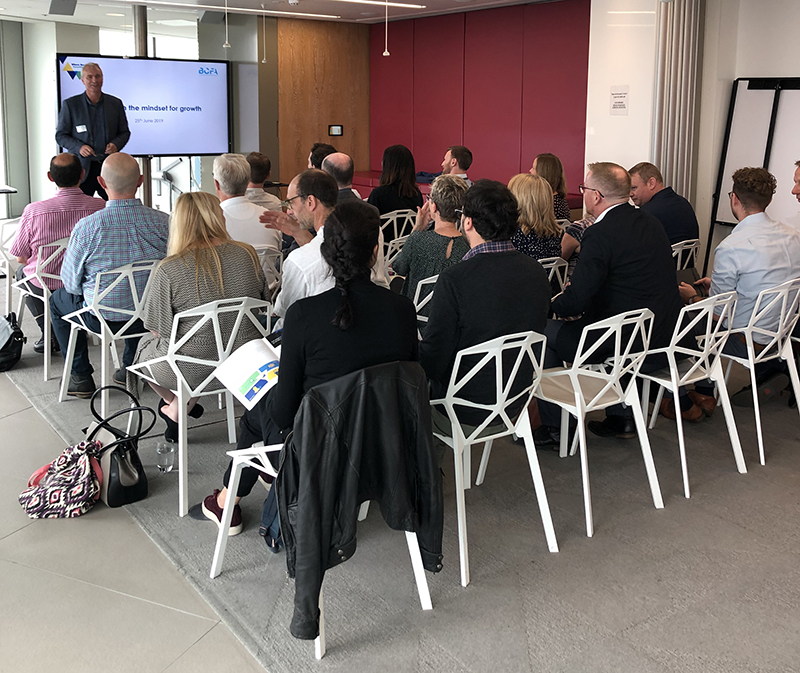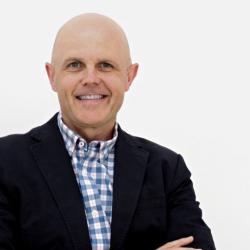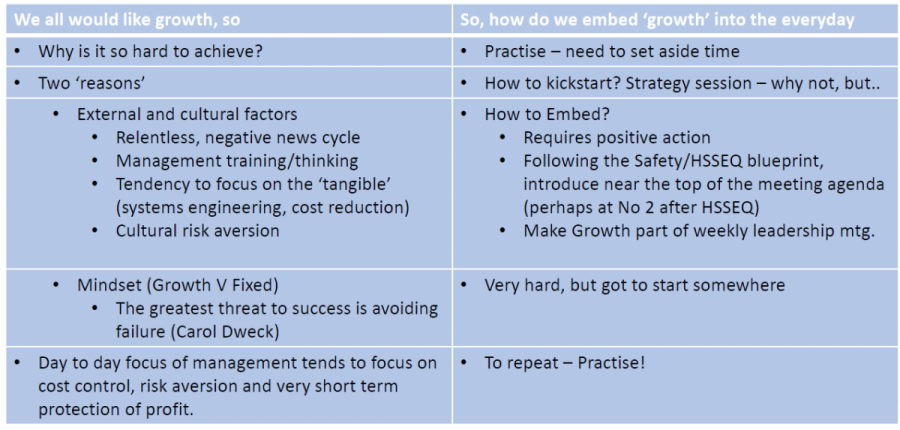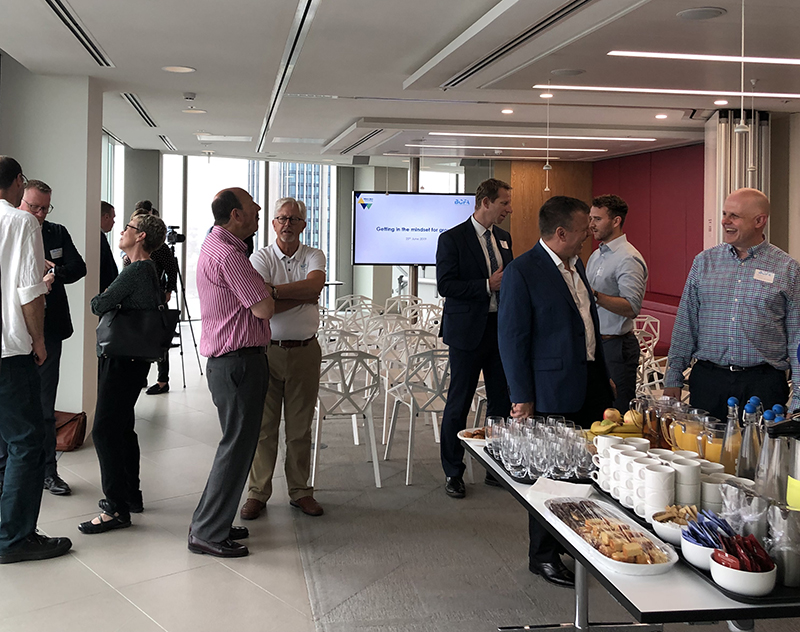The BCFA hosted a Business Forum and Networking event during June at the Informa Markets offices in London, with guest speakers Paul Yacoubian, Director of Where Now Consulting, and Digital Marketing and Strategy Consultant Andrew Lloyd Gordon.

We summarise the key take-aways from the seminar below…
 Think Smarter about Creativity – Andrew Lloyd Gordon
Think Smarter about Creativity – Andrew Lloyd Gordon
We get creativity all wrong
Creativity is rarely a ‘lightbulb’ moment, where we jump from darkness into the light. Instead, the process of creation is more a gradual, step-by-step and fumbling process where we move, slowly and through many shades of grey towards a better quality of thinking.
We get creative people wrong
Creative people are not some rare or unique group of people. All of us have the potential to be creative. It’s just that some people see themselves as being more creative. They permit themselves to be creative and, therefore, get more practice. Despite the myths, creative people tend to work incredibly hard. They put in the hours, days, weeks and years to produce something great. As the saying goes, it takes ten years to be an overnight success.
Have a growth mindset
Something that creatives do tend to share is what psychologists call a ‘growth mindset’. This mindset is an attitude to life that pushes people to challenge themselves constantly. Growth-minded people push out, beyond their comfort zones. They seek feedback from others. They understand that success comes from putting in the time and effort. Also, they are comfortable with failing.
Consume lots of content
Another common characteristic of creative people is that are interested in the world around them. They eagerly consume all sorts of media and seek input from many different directions. This appetite for stimulus can include everything from visiting museums to watching movies, voracious reading, listening to music and an interest in politics, science and the arts.
Stand on the shoulders of giants
Creative people learn from masters in their fields. They are not afraid to copy, often word for word or brushstroke for brushstroke. They do this not to steal or cheat but rather to speed up their learning and personal development.
Iterate and iterate again
Creativity is never finished. It does not stand still. Creative people know this and are continually tweaking what they do. And they do this best when they put their work out into the world quickly and use the feedback from others to take their ideas to the next level.
Find the MAYA sweet spot
Raymond Loewy discovered, long before science did that people find something innovative when it’s in the sweet spot between the new and the familiar. Loewy described this tendency as ‘Most Advanced, Yet Acceptable’ or MAYA. You can use the MAYA principle to increase the chance of success for your ideas, products and services.
Produce more, always
Younger people tend to have more creative success. However, this doesn’t mean that only young people are creative. Age is not a barrier to creativity. As people age, their creative output tends to decline in volume. This decrease is because they may have more responsibilities and maybe more to lose. This belief is a mistake. Indeed, creative people find ways to be productive throughout their lives. They can be as inventive in their teens as when they are in their 70s’.
Find the gatekeepers
Success comes to those who understand the network. You can have the most innovative product or service, but it is of little value unless others know about it. If you want to change the world, then the world must know about you. The way to achieve this is to learn how to navigate the network. Connect to those who have access to information or leverage. Form friendships and mutually beneficial relationships with those who have influence and power. Use your connections to spread the word about your creativity and draw energy from the opportunities the network provides.
Join creative communities
Social networks bring other benefits too. Belong to, and being active in, creative communities. These communities – often although not exclusively found in big cities – feed the creative brain. Creative people revel in the stimulus that comes from working and living amongst other creative types. Especially if these fellow creatives are drawn from different disciplines and areas of life.
Diverse teams and visionary leaders
Creative people are not loners. They work best when part of a supportive network of colleagues. Diversity in teams also aids the creative process. Teams should include a mixture of people of different ages, backgrounds, experiences, personalities and skill sets. To be truly effective, creative teams need inspiring leaders. These are people who have a clear vision, a passion for making a difference and the ability to get the best out of the people they lead.
Success breeds success
First movers have the advantage. Science suggests that it is those people who go first, raising their head above the parapet, cannot only start but then shape the conversation. Creative people understand this and are willing to ‘put themselves out there’. Even if their creative output is not yet fully formed, they know that by being first in describing a new way of doing or setting the standards for others to follow, gives enormous advantages for those of us who are brave enough to be creative.
 Getting in the mindset for growth – Paul Yacoubian
Getting in the mindset for growth – Paul Yacoubian
Paul Yacoubian is a director of Where Now Consultancy, a consultancy focused on helping companies grow and compete.
Pauls presentation addressed business growth, how to get it and why it sometimes feels so difficult to achieve.
There was an assessment of all the reasons why it is so difficult to find the time to spend on growth (risk aversion, the preference to deal with ‘tangibles’ such as cost, management training focused on operational and systems efficiency, and the ever increasing frequency of negative news bytes). As well as all this was the difference between a growth and fixed mindset as examined by the Stanford academic Carol Dweck - ‘the threat to success is avoiding failure’.
The session then covered the need to deliberately pivot towards growth by:
- setting aside time to think about growth
- embedding growth in the day to day.
It was recognised that this was not easy and required:
- practise
- a ‘kickstarter’ such as a away day session
- use of a ‘growth model’ tool to structure discussions and ideas (the session covered the use of one such tool - ‘the levers of growth’)
- having ‘growth’ at or near the top of the agenda in leadership meetings.’

Thank you to everyone who attended the Forum, there was a fantastic turnout and some great questions asked throughout.
